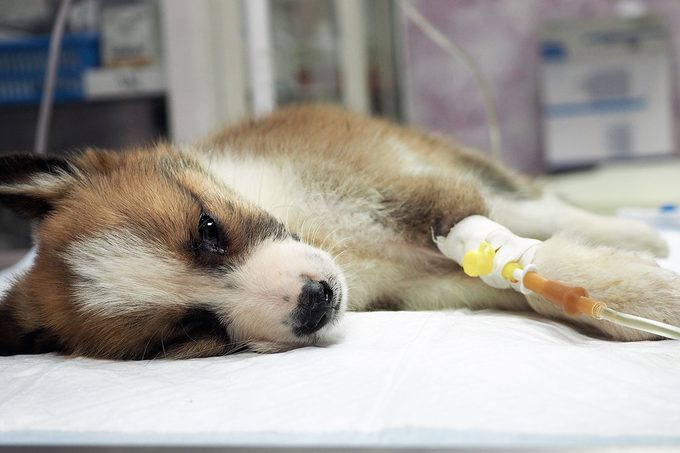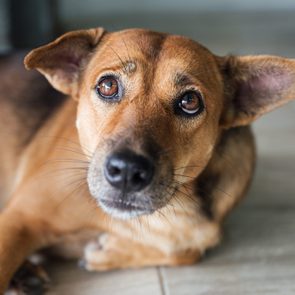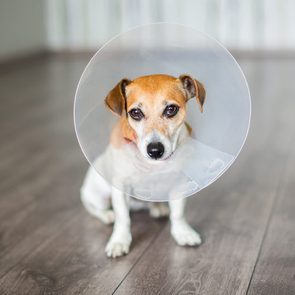Canine Parvovirus Is on the Rise—Here’s What You Need to Know
Updated: Apr. 17, 2023

A veterinarian shares the dangers of this virus, and how to keep your pup protected.
A very infectious disease is coming after the dogs of New York City—and has been on the rise for other parts of the country as well. Recently, the New York City Department of Health and Hygiene released an alert in March that 14 dogs were diagnosed with canine parvovirus, a highly contagious virus that attacks a dog’s gastrointestinal tract. While the number seems small, this is exceptionally high for this virus and is considered a major threat due to how contagious it is.
While this virus does not infect humans or cats, it is highly contagious for dogs and easily spread through close contact—including a dog’s environment, everyday tools (like leashes, collars, clothing and toys), and contaminated feces. According to experts at Cornell University, wild canines like coyotes and wolves can also catch this disease, as well as other wild animals like foxes, raccoons, and skunks.
So how do you keep your dog protected? Holly Dutton, DVM, the medical director of VEG Tampa, shares tips on how your furry family member can avoid canine parvovirus for good.
Why is there an increase in canine parvovirus?
“Several different factors could have led to this increase we are seeing,” says Dutton. “This post-COVID lifestyle is one where we are out and about more than ever; with so many pet-friendly social spaces that allow our fur babies to go just about everywhere with us. Dogs can easily pick up parvo in almost every place we take them.”
Another reason why there has been a serious spread of canine parvovirus recently may also have to do with a resistance to getting vaccines of any kind—even for pets.
“There is also a movement in the human world where some feel vaccines are not needed or have harmful effects; some owners will apply this thought process to their pets, leaving them more vulnerable to this preventable and, at times, deadly disease,” says Dutton.
What are the symptoms of canine parvovirus?

According to Dutton, canine parvovirus can present first and foremost as “mild to severe vomiting and diarrhea.”
The American Veterinary Medical Association (AVMA) also points out that signs such as lethargy, loss of appetite, abdominal pain and bloating, fever and low body temperature could all present as symptoms of the canine parvovirus.
If these dog illness symptoms present themselves, it’s important to get a proper diagnosis—either by stool antigen testing or viral PCR—and to isolate the infected dog in a comfortable environment, given that the canine parvovirus is known for being highly contagious.
How do you prevent your dog from getting canine parvovirus?
To prevent your furry friend from getting this disease altogether, Dutton says the best thing to do is to talk to your family veterinarian about a vaccine protocol for your pet.
“Until they are vaccinated, keep your puppies away from common areas like dog parks or places where people walk their dogs,” she says. This also includes other places where dogs congregate, like training classes, daycares, grooming establishments, and more. “It doesn’t just stop with the puppy vaccines; we have to make sure our pets stay protected.”
Along with vaccines, the AVMA also recommends good hygiene for the dog is vital. This includes cleaning your dog’s ears, teeth, and face, trimming nails, taking regular baths and brushing their coats.
Sources:
- NBC New York: NYC Warns of Highly Contagious Virus Spreading in Dogs
- Cornell University College of Veterinary Medicine: Canine Parvovirus
- Holly Dutton, DVM, the medical director of VEG Tampa
- American Veterinary Medical Association: Canine parvovirus
- USPCA: 8 Essential Hygiene Tips for Dog Owners















